
REVIEW ARTICLE
EURAD the European Joint Programme for research
on radioactive waste management between EU members
states national programmes
Marie Garcia
1,*
, Tara Beattie
2
, and Stéphan Schumacher
1
1
R&D Department, Andra, 1-7 rue Jean Monnet, 92298 Chatenay-Malabry, France
2
MCM Environmental Services Ltd, 1 Little King Street, Bristol BS1 4HW, UK
Received: 12 March 2019 / Accepted: 16 September 2019
Abstract. For more than 40 years, considerable scientific and technical knowledge has been acquired in Europe
in the field of radioactive waste management, both for near-surface disposal and geological disposal. RD&D will
continue to be necessary to develop, maintain and consolidate knowledge throughout the stepwise development,
operation and closure of disposal facilities, which will be spread over many decades and make this knowledge
available to all end users. Recently, the EC has promoted a step-change in pan-European research cooperation
between EU Member States’national programmes by promoting the setting-up of inclusive research joint
programmes in Europe gathering those organisations with scientific and technical responsibilities and a national
mandate for research in radioactive waste management. Based on the positive achievement of the JOPRAD
project (2015–2017), the EC confirmed in 2017 its willingness to co-fund such a Joint Programme in the field of
RWM. The RWM community therefore pursued the efforts to establish the Founding Documents (Vision,
Strategic Research Agenda, Roadmap, Deployment) and a Work Plan for a first implementation phase of 5-years
(2019–2024). In June 2019 the Joint Programme EURAD was accepted by the European Commission.
1 Introduction successful RD&D
collaboration across Europe
For more than 40 years, considerable scientific and
technical (S/T) knowledge has been acquired in Europe
in the field of radioactive waste management (RWM), in
particular for deep geological disposal. This has supported
countries to progress towards licensing of geological
disposal facilities (e.g. Finland, Sweden and France) and
contributed to the progress of numerous Member States’
disposal programmes. RD&D efforts in radioactive waste
management, including disposal, will continue to be
necessary to:
–develop, maintain and consolidate S/T knowledge
throughout the stepwise development, operation and
closure of disposal facilities, which will be spread over
many decades and make this knowledge available to all
end users;
–ensure optimisation of waste management routes and of
disposal solutions;
–address evolving regulatory concerns;
–bridge the risk of shortage of the skilled, multidisciplin-
ary human resources needed to develop, assess, license
and operate facilities for RWM; and
–help in gaining and maintaining public confidence.
The European Commission (EC) has supported the
acquisition of knowledge at the European level by
supporting collaborative RD&D projects through the
EURATOM programme on RWM [1] and has also
enhanced coordination and networking activities by
supporting the establishment of the IGD-TP platform [2]
a network for European Waste Management Organ-
isations and the SITEX Network [3] for the regulatory
expertise function undertaken by regulatory authorities,
regulators, and their technical support organisations,
which are both now independently funded.
Recently, the EC has promoted a step-change in pan-
European research cooperation between EU Member
States’national programmes by promoting the setting-
up of inclusive research joint programmes in Europe,
attracting and pooling a critical mass of national resources
on specific objectives and challenges. The objective for the
EC is therefore to promote and co-fund ambitious
programmes rather than individual projects, bringing
together those legal entities from EU Member-States
*e-mail: Marie.GARCIA@andra.fr
EPJ Nuclear Sci. Technol. 6, 21 (2020)
©M. Garcia et al., published by EDP Sciences, 2020
https://doi.org/10.1051/epjn/2019044
Nuclear
Sciences
& Technologies
Available online at:
https://www.epj-n.org
This is an Open Access article distributed under the terms of the Creative Commons Attribution License (https://creativecommons.org/licenses/by/4.0),
which permits unrestricted use, distribution, and reproduction in any medium, provided the original work is properly cited.

and associated countries able to direct national funding
and/or manage a national research and innovation
programme [4–6].
2 A feasibility study towards a Joint
Programme on RWM JOPRAD project
The EURATOM JOPRAD project was launched in June
2015 with the objective to assess if the RWM community
could be meaningfully integrated in such a Joint
Programme, and if so, to prepare its establishment. By
identifying those with key responsibility for directing
RD&D in the field of RWM, and engaging them in the
process of developing a shared Vision and identifying the
S/T basis for shared research agenda, JOPRAD has
demonstrated the feasibility and the added-value of
creating such a Joint Programme in the field of RWM [7,8].
2.1 Identifying the categories of organisations
Across Europe, the organisation for how RD&D is managed
and completed, in support of the safe management of
radioactive waste, varies widely. At the highest level, most
Member States have programme owners such as a ministry,
national/regional authority or private organisation in
charge of setting-up and managing a national programme.
This is often followed by varying levels of ‘programme
managers’, who have a formal mandate and delegated
responsibility for technical RD&D activities associated
with the national programme.
The JOPRAD project identified three distinct catego-
ries of organisations, from across 28 EU Member States,
Switzerland and Ukraine, with S/T responsibilities and a
national mandate for research in RWM, and that are
willing to share a Strategic Research Agenda (SRA) for
European collaborative RD&D:
–Waste Management Organisations (WMOs) having
the ultimate responsibility for the implementation of
geological disposal (which includes the management of a
supporting RD&D programme), and for some other
topics of RWM (e.g. waste characterisation, treatment
and packaging, interim storage, etc.). WMOs from across
Europe form a core part of the Joint Programme and
provide a driving force for what is needed for successful
and practical implementation from an industrial per-
spective. WMOs have established a network and
coordination framework for RD&D needs of the
implementers of geological disposal at the European
level via the Implementing Geological Disposal Technol-
ogy Platform (IGD-TP);
–Technical Support Organisations (TSOs) carrying
out activities aimed at providing the technical and
scientific basis for supporting the work and decisions
made by a national regulatory body. As safety cases for
waste processing, storage and disposal develop, so too do
the safety case reviews and independent scrutiny
responsibility by regulatory organisations in the frame-
work of the decision-making process. This requires
specific skills (such as safety case review methodology)
from the regulatory expertise function undertaken by
safety authorities, regulators, and their TSOs. Several
TSOs, together with other organisations fulfilling a
regulatory expertise function and Civil Society Organ-
isations have established the SITEX network to support
independent technical expertise in the field of safety of
geological disposal of radioactive waste; and
–Research Entities (REs) working to different degrees
on the challenges of RWM including disposal (and
sometime in direct support to implementers or WMOs or
TSOs), under the responsibility of Member States. This
includes national research centres, some research organ-
isations and some universities that could also be funded
by other sources. RE’s provide scientific excellence and
leading-edge research on basic components and generic
processes in relation to the management of radioactive
waste, and therefore represent an important proportion
of the contributions to the Joint Programme.
Furthermore, the following organisations were identi-
fied as key interest groups of cooperative research in the
field of RWM:
–Civil Society Organisations (CSOs) having an
interest in RWM. This includes local organisations
(associations, local committees of information, local
partnerships), national or European civil society organ-
isations willing to take part in interactions with the
nationally mandated actors in EURAD;
–Waste Producers and those with a pre-disposal waste
management responsibility are engaged via the Nuclear
Generation II & III Association (NUGENIA);
–International Organisations such as the Internation-
al Atomic Energy Association (IAEA) and the Organi-
sation for Economic Co-operation and Development
Nuclear Energy Agency (OECD-NEA).
2.2 Identifying the S/T basis for a Joint Programme
Each of these three categories of actors (WMOs, TSOs,
REs) then identified S/T activities suggested as suitable for
inclusion within a potential future Joint Programme and
within the different activities considered, they indicated
their preferences and priorities based on their own
perceived needs.
The following step-wise process was then used to
further define and prioritise the S/T domains of common
interest of the different categories of actors:
–Compiling Activities for Inclusion: Drafting a first
compilation of combined activities suggested as suitable
for inclusion within a potential future Joint Programme. A
key part of this step was to organise and coalesce suggested
activities (identified from WMO-, TSO- and RE-specific
SRAs) into a suitable structure, considering the different
types of activities suggested and the adoption of a common
terminology and appropriate scope definition for a
potential future Joint Programme. Once the first compila-
tion was prepared, it was recognised that this did not
represent an exhaustive list of all the potential activities
that could enter into the scope of a potential future Joint
Programme. It simply indicated activities for which a
sufficient level of common interest has been expressed
among the JOPRAD contributors.
2 M. Garcia et al.: EPJ Nuclear Sci. Technol. 6, 21 (2020)

–Surveying Representative Joint Programme Participant
Views: Eliciting JOPRAD participants’opinions on their
preferences and motivations for prioritising activities.
This was completed by issuing a comprehensive
questionnaire of suggested activities, allowing JOPRAD
participants to comment and express views on activities
suggested by all the represented groups for the first time.
–Identifying Priorities and Activities of High Common
Interest between WMOs, TSOs and REs: Analysing the
questionnaire responses to identify the themes with high
common interest, and the adoption of screening criteria
used to prioritise what should be included in the Joint
Programme. This step included development of a
methodology to cross-check that all prioritised activities
met with the established boundary conditions for the
Joint Programme (see Sect. 2.3).
–1st Draft SRA: Drafting a first compilation of the Joint
Programme S/T scope with a clear description of
prioritised RD&D activities agreed and supported by
all JOPRAD participants.
–SRA Consultation and Finalisation: Consultation of the
draft S/T scope within the broader European RWM
community. Obtaining feedback and end-user input to
facilitate updating of the final Programme Document.
2.3 Defining the governing principles for a Joint
Programme
The JOPRAD project has defined the following principles
that shall be respected for joint programming.
Positive Participation Contributors will work
positively towards achievement of the Vision. All contri-
butions will be valued. Work will be carried out
considerately and respectfully by all, maintaining relation-
ships that respect diversity, different roles and boundaries,
and respect the knowledge, insight, experience and
expertise of others.
Maintenance of Independence It is possible for
different organisations with different roles in their national
programme to work together, without prejudice in relation
to their own role in the national implementation process.
Most important is the independence between the “expertise
function”(fulfilled by TSOs and by some Research
Entities) and the “implementer function”(fulfilled by
WMOs). Different parties (WMOs and TSOs in particular)
can have common agreement of what RD&D should be
done and how, and Research Entities may furthermore
have a long-term vision of general research needs. All can
collaborate in doing the basic research; however, main-
taining their independence in developing their own views
on the interpretation of the generated research results and
data is essential.
Transparent Governance A transparent, bal-
anced and efficient mode of governance is maintained,
taking into account the role and independence of the Joint
Programme participants with a national mandate for
research in RWM.
Scientific Excellence RD&D activities shall focus
on achieving passive safety (safety of a disposal facility is
provided for by means of passive features inherent in the
characteristics of the site and the facility and the
characteristics of the engineered barriers, together with
certain institutional controls, particularly for surface
facilities) and reducing uncertainties through excellence
in science.
Balanced Programme Recognising that different
Member States have a wide variance in the status of their
National Programme, the scope should support pro-
grammes at all stages of advancement.
Added Value Ensuring that the Joint Program-
ming provides real added value (e.g. enhanced coordination
and improved information and knowledge transfer between
national programs, improved financial arrangements,
improved stakeholder understanding and acceptance of
outputs, more robust RD&D outputs, etc.). Administra-
tion costs should represent a small proportion (including
ongoing legal, EC admin., etc.) in comparison to the money
spent on the technical and scientific scope.
Inclusiveness Ensuring that the different categories
of actors and groups of interest are involved in the
definition and implementation of the Joint Programme.
Equitable Financing Financial costs (financial/in-
kind) should be equitable; participants should contribute
what they can afford, or what they consider matches their
interest in a project.
Complementary Participation Participation in
Joint Programme is complementary to RD&D activities
which will continue to be undertaken nationally or jointly
outside of the auspices of the Joint Programme where
required; and
Tangible Results The scope is appropriately
prioritised and focused on the objective to achieve tangible
results within a reasonable timeframe. A key aspect is that
participants recognise that the Joint Programme is a
distinct change from past work (and other collaborative
working) on radioactive waste management. Translating
the scientific, technical and societal challenge of RWM
(including disposal) into operational reality requires the
generation of new knowledge, combined with the consoli-
dation, maintenance and transfer of existing knowledge.
3 Establishing the European Joint
Programme on Radioactive Waste
Management EURAD
Based on the good progress and the positive achievements
of JOPRAD, the EC confirmed in 2017 its willingness to co-
fund such a Joint Programme in RWM with a dedicated
topic included in the EURATOM WP2018 (indicative
EC available budget for 5 years: 32.5 M€). The RWM
community composed of 52 organisations mandated by
their Programme Owner (19 WMOs, 13 TSOs and 20 REs)
and more than 100 associated research organisations from
23 countries pursued the efforts to establish a Joint
Programme in order to be able to submit in September 2018
to the EC its Founding Documents (Vision, Strategic
Research Agenda, Roadmap, Deployment mechanisms)
and a Work Plan for a first implementation phase of 5-years
[9](Fig. 1).
M. Garcia et al.: EPJ Nuclear Sci. Technol. 6, 21 (2020) 3

3.1 Vision
A step change in European collaboration towards safe
RWM, including disposal, through the development of a
robust and sustained science, technology and knowledge
management programme that supports timely implementa-
tion of RWM activities and serves to foster mutual
understanding and trust between Joint Programme par-
ticipants.
By step-change we mean a new era via a more effective
and efficient public RD&D funding in Europe, and a
deepening of research-cooperation between Member
States. The aim is to implement a joint Strategic
Programme of research and knowledge management
activities at the European level, bringing together and
complementing EU Member State programmes in order to
ensure cutting-edge knowledge creation and preservation
in view of delivering safe, sustainable and publicly
acceptable solutions for the management of radioactive
waste across Europe now and in the future.
The Joint Programme shall support the implementa-
tion of the Waste Directive in EU Member-States [10–13],
taking into account the various stages of advancement of
national programmes. National RWM programmes across
Europe cover a broad spectrum of stages of development
and level of advancement, particularly with respect to
their plans and national policy towards implementing
geological disposal. Programmes differ significantly
depending on the national waste inventory, with some
member states only responsible for relatively small
volumes of medical and research reactor wastes, compared
to others that have comparatively large and/or complex
waste inventories from large nuclear power (and fuel
reprocessing) and defence programmes. Programmes also
differ significantly in the way in which they are managed,
particularly with respect to the national policy and socio-
political landscape with respect to longer-term storage
and geological disposal.
Across Europe, the terms ‘Advanced Stage Pro-
gramme’,‘Early Stage Programme’(or programmes with
longer time scales) and ‘Small Inventory Programme’are
typically adopted. Regardless of size and stage of
implementation, all Member-States are responsible for
the safe management of radioactive waste and are required
to report periodically on the status of their national
programme.
The EURAD therefore gathers Members-States:
–with no nuclear power programme operating, but with
research, training or demonstration reactors, and/or
other sources of radioactive waste;
–with a nuclear programme;
–with different amounts of radioactive waste to manage;
–at different stages of advancement in the implementation
of their national RWM programme; and
–with plans for geological disposal for Spent Fuel, High-
level Waste and long-lived intermediate level waste, with
different host rocks and different disposal concepts and at
different stages of implementation.
3.2 Strategic Research Agenda and roadmap
The EURAD Strategic Research Agenda (SRA) provides a
description of S/T Themes and Sub-Themes of common
interest between the participants. These needs are grouped
into a number of scientific themes and based upon the scope
established by the JOPRAD project. The SRA is
structured by seven Scientific Themes, as illustrated in
Figure 2 and should allow to capture all areas relevant for
the implementation of waste management solutions.
Although all technical in nature, Theme 1 is an overarching
theme, Themes 2–5 are predominantly focussed on
fundamental science, engineering, and technology, and
Themes 6 and 7 include aspects more of an applied science
and integration focus.
The S/T scope in the SRA covers cutting-edge S/T
activities on RWM from cradle to grave, including
predisposal, interim storage and disposal solutions
mainly geological disposal of spent fuel, high level waste
and intermediate level waste
1
. The EURAD SRA has
been set up as a dynamic and living document that shall
be updated periodically in order to integrate outcomes of
RD&D activities as well as any emerging collaboration
needs identified by the RWM community during the
implementation phases of the Joint Programme.
Fig. 1. Representation of countries involved in the joint
programming.
1
Specific RD&D required for near-surface or surface disposal and
low-level waste (LLW), will be addressed, and is encompassed
within the RD&D needs identified for waste characterisation and
processing, interim storage and geological disposal of radioactive
waste. Nuclear facility dismantling and decommissioning activ-
ities are however excluded, although interfaces, and particularly
aspects that impact final disposal will be considered.
4 M. Garcia et al.: EPJ Nuclear Sci. Technol. 6, 21 (2020)

Theme 1: Managing implementation and
oversight of a RWM programme
Implementation of a national RWM programme,
including geological disposal, requires a national policy
reflected in the legal framework, a long-term vision based a
sound scientific-technical foundation, appropriate regula-
tory oversight, funding, organisational infrastructure and
sound management systems and processes and formally
organized exchange among stakeholders. For programmes
in the early phase of establishing national policy or
developing a waste management programme, support by
international entities (IAEA, NEA) is available and EU-
wide good practice and lessons learned can be used to
facilitate implementation of suitable organisational struc-
tures and strategic decision making.
Theme 2: Radioactive waste characterisation,
processing and storage (pre-disposal activities),
and source term understanding for disposal
This involves characterizing and documentation of the
various waste types (requiring activation calculations,
evaluation of contamination carry-over, development of
waste treatment and packing technology, etc.), evolution of
waste matrix properties during extended interim storage,
developing waste acceptance criteria and developing model
predictions about future waste. This also includes develop-
ment of sufficient interim storage capacity. Source term and
radionuclide release mechanisms need to be assessed for
different waste forms/waste packages considering the
interaction of the various interfaces with the disposal
environment. In this broad area of work much information
is already available or can be acquired through co-operation.
The remaining issues are often site and design specific.
Theme 3: Engineered barrier system properties,
functions and long-term performance
Engineered barriers (overpack, buffer, backfill, seals,
etc.) are in a broad sense comparable in many programmes
and much basic information is already available today as
there have been many European and international projects
to-date. Existing needs can be further developed through
continued co-operation, which includes the provision of
utilising available Underground Research Laboratories
(URL) to conduct large-scale demonstration and verifica-
tion testing. However, at a National Programme level some
specific development work is often necessary to improve the
understanding of the system of engineered barriers,
optimise it or adapt it to the specific situation at hand.
Remaining research issues concern in particular cementi-
tious and to a lesser degree clay-based materials.
Theme 4: Geoscience to understand rock
properties, radionuclide transport and long-term
geological evolution
Geoscience focusses on host rocks representative for a
broad range of geologies also to better understand long-
term geological evolution (and stability), and on the
detailed understanding of the relevant properties and
behaviour of different types of host rocks. This includes the
transport properties of radionuclides and fluids, redox
phenomena, coupled phenomena to address facility-
induced disturbances, and the impact of gases. This also
includes the demonstration and verification that the
important coupled geomechanical, thermal, hydrological
and chemical phenomena are sufficiently well understood
to allow for long term assessment of void space closure,
fluid movement and behaviour of the material interfaces, in
Fig. 2. Scientific themes of the EURAD SRA.
M. Garcia et al.: EPJ Nuclear Sci. Technol. 6, 21 (2020) 5

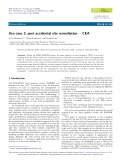
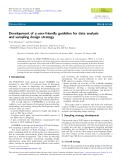
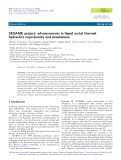
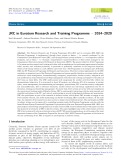
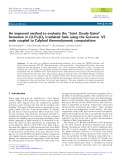
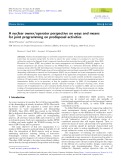
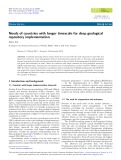

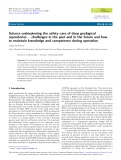
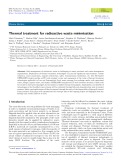
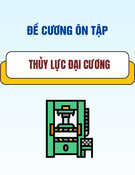
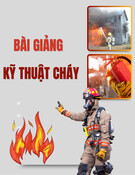
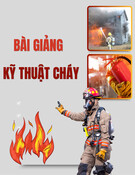
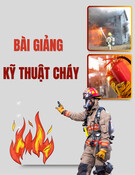
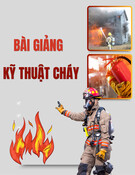

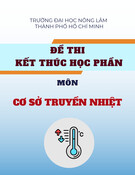
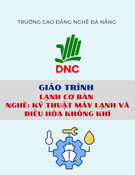
![Ngân hàng trắc nghiệm Kỹ thuật lạnh ứng dụng: Đề cương [chuẩn nhất]](https://cdn.tailieu.vn/images/document/thumbnail/2025/20251007/kimphuong1001/135x160/25391759827353.jpg)






